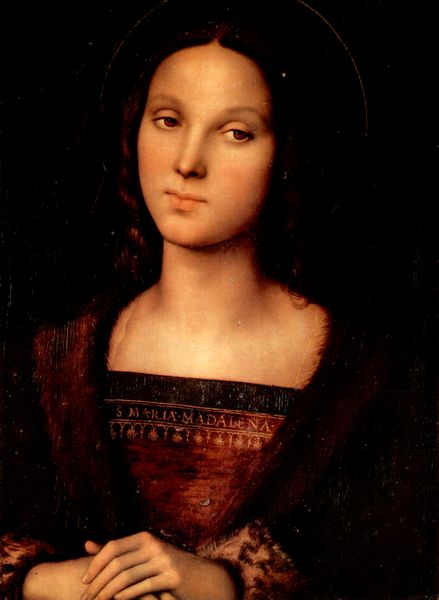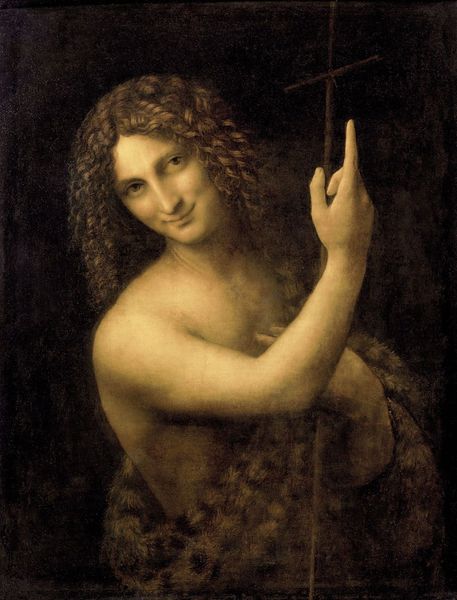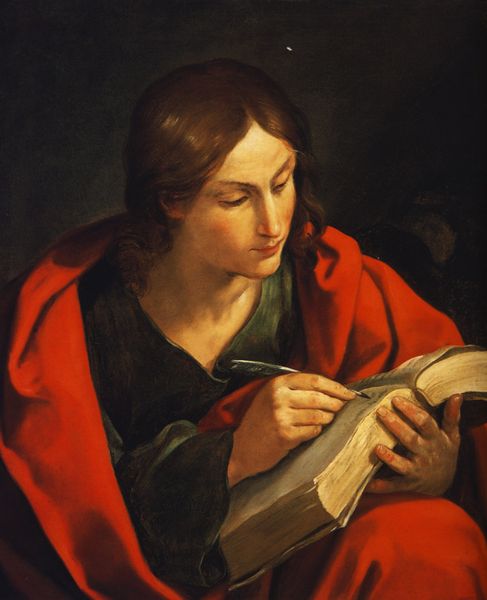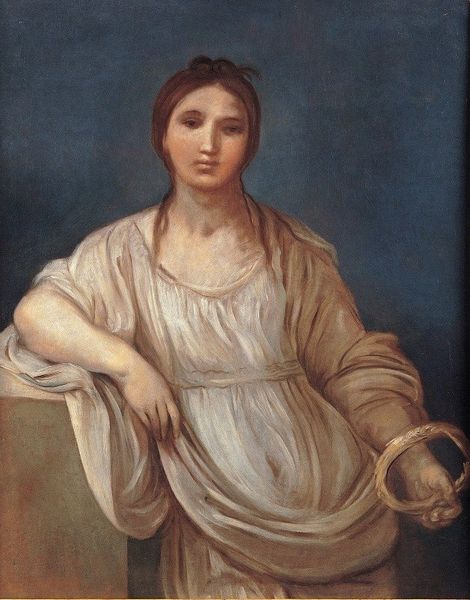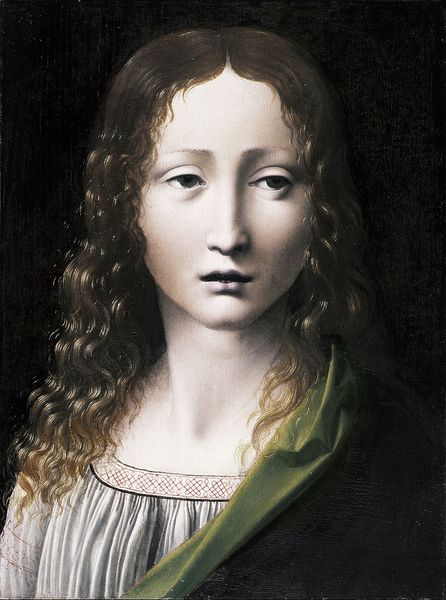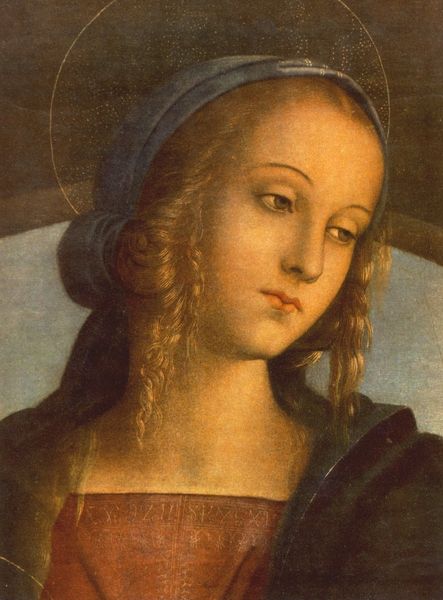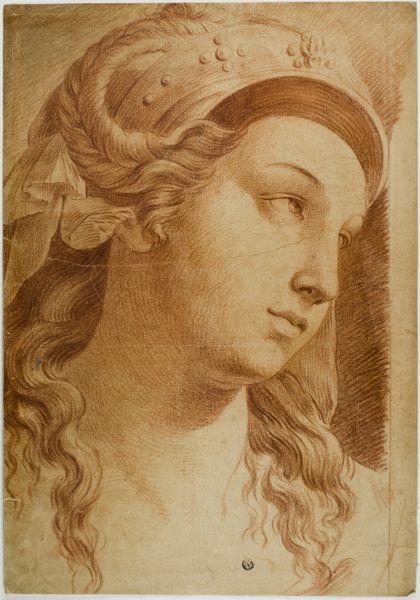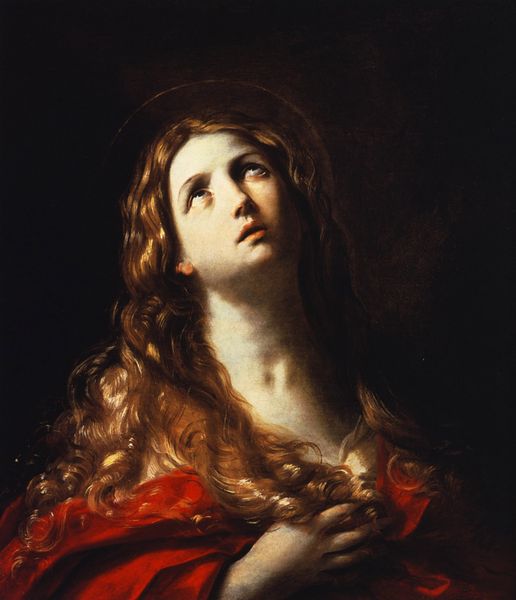
#
character portrait
#
possibly oil pastel
#
portrait reference
#
portrait head and shoulder
#
underpainting
#
edgy portrait
#
pastel chalk drawing
#
abstract character
#
portrait art
#
celebrity portrait
Copyright: Public domain
Correggio’s “Young Christ” was painted with oil on panel, likely sometime in the early 16th century. Oil paint provided a new means of achieving lifelike effects during this period. Look closely, and you’ll notice that the painting is full of a soft, hazy light. Correggio achieved this by carefully layering thin coats of paint, called glazes. The oil medium allowed him to blend colors seamlessly, creating delicate transitions. This would have taken considerable time and skill. The painting, therefore, speaks to the value placed on artistic labor during the Renaissance. It took time and money to produce such a radiant image, and the result was a testament to both artistic talent and the patron’s wealth. This mode of production reflects a society deeply invested in the power of images. More than a demonstration of skill, the painting uses light and material to evoke religious experience. It exemplifies how artistic techniques can be used to convey cultural meaning.
Comments
No comments
Be the first to comment and join the conversation on the ultimate creative platform.
